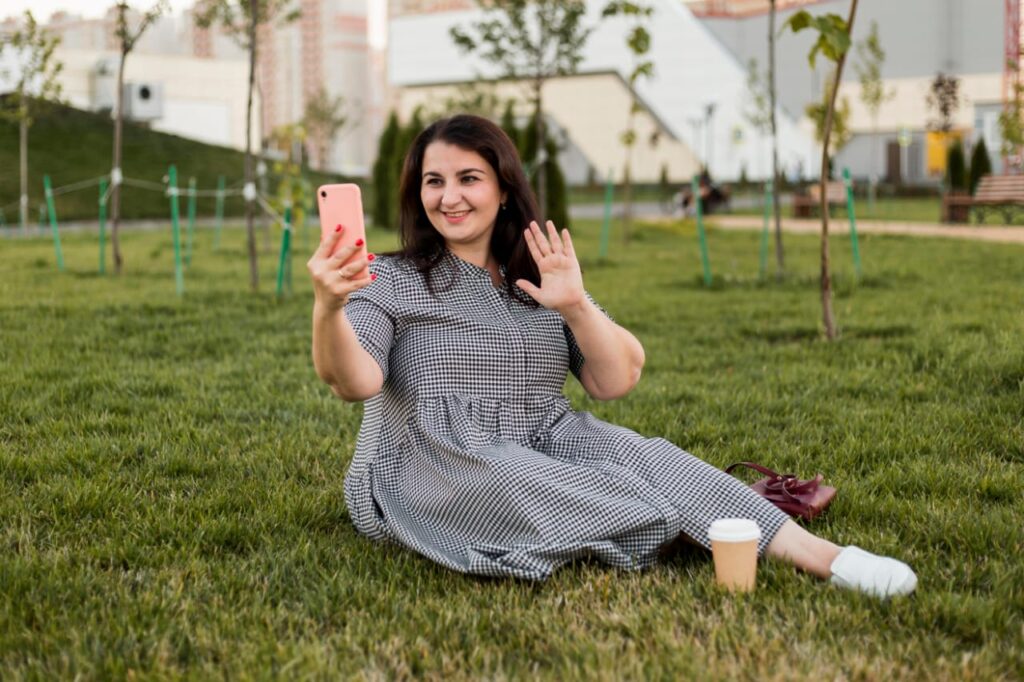When we talk about wellness, it’s not just about being free from illness; it’s about thriving in all areas of our lives. But how does wellness look like in practice? To truly understand this, let’s explore the different dimensions of wellness and how they contribute to a balanced, fulfilling life.
Table of Contents

1. Physical Wellness
How does wellness look like in physical terms? Physical wellness is about taking care of our bodies to ensure they function optimally. It involves:
- Regular Exercise: Engaging in physical activities like jogging, yoga, or dancing helps keep our body fit and energized. Regular exercise is a cornerstone of how wellness looks like physically.
- Balanced Diet: Eating a variety of nutritious foods supports overall health. Think fruits, vegetables, lean proteins, and whole grains. Proper nutrition is a key aspect of how wellness looks like in our daily lives.
- Adequate Sleep: Getting enough rest is crucial. Quality sleep rejuvenates the body and mind, contributing significantly to how wellness looks like.
- Routine Check-Ups: Regular visits to the doctor help catch potential health issues early. This proactive approach is part of understanding how wellness looks like in maintaining good health.
However, how does wellness look like when things go wrong? Neglecting these areas can lead to overexertion, poor eating habits, or ignoring health symptoms. Each of these can disrupt our physical wellness, showing us what happens when we don’t follow a balanced approach.

2. Mental Wellness
How does wellness look like mentally? Mental wellness is about managing stress, staying mentally active, and maintaining a positive outlook. Key aspects include:
- Stress Management: Techniques like meditation, deep breathing, and mindfulness help manage stress effectively. This is a fundamental part of how wellness looks like mentally.
- Healthy Coping Strategies: Finding constructive ways to handle life’s challenges, such as talking things through with friends or engaging in hobbies, is crucial. This is another dimension of how wellness looks like.
- Professional Help: Seeking therapy or counseling when needed reflects a mature understanding of mental wellness and how it should be approached.
On the flip side, how does wellness look like when mental health is neglected? Chronic stress, avoidance of mental health issues, or relying on unhealthy coping mechanisms can all detract from mental wellness. Recognizing these signs helps us understand the importance of maintaining mental health.

3. Emotional Wellness
How does wellness look like in terms of emotional health? Emotional wellness involves managing and expressing our feelings in a healthy way. This includes:
- Healthy Expression of Emotions: Being able to share your feelings honestly and constructively is a vital part of how wellness looks like emotionally.
- Supportive Relationships: Building and nurturing positive relationships provides emotional support and stability. This is an essential component of how wellness looks like in our social lives.
- Emotional Resilience: Developing the ability to bounce back from setbacks helps maintain emotional balance, reflecting how wellness looks like in our emotional state.
Neglecting emotional wellness can lead to suppressed feelings, toxic relationships, or difficulty managing emotions. Understanding these negative aspects provides insight into how wellness looks like when emotional health is not prioritized.

4. Social Wellness
How does wellness look like in social terms? Social wellness revolves around building and maintaining meaningful relationships and participating in the community. Key elements include:
- Building Connections: Forming meaningful relationships and engaging with others supports social wellness. This connection is a key part of how wellness looks like socially.
- Community Involvement: Participating in community events or groups fosters a sense of belonging and purpose. This engagement is a crucial aspect of how wellness looks like in our social lives.
- Effective Communication: Good communication skills and empathy are essential for healthy relationships. This is another way to understand how wellness looks like socially.
Conversely, how does wellness look like when social connections falter? Social isolation, poor communication skills, or toxic relationships can detract from social wellness, highlighting the importance of maintaining healthy social interactions.

5. Spiritual Wellness
How does wellness look like spiritually? Spiritual wellness involves seeking purpose and meaning in life. This can look like:
- Purposeful Practices: Engaging in activities like meditation, prayer, or reflection helps connect with a sense of purpose. This is how wellness looks like on a spiritual level.
- Reflecting on Values: Understanding and aligning with personal values and beliefs contributes to spiritual wellness. This reflection helps us grasp how wellness looks like spiritually.
- Connection to a Higher Power: For many, connecting with a higher power or nature provides a sense of meaning and peace, which is another facet of how wellness looks like spiritually.
When spiritual wellness is lacking, how does wellness look like? A lack of purpose or feeling disconnected from one’s values can affect overall well-being, emphasizing the need for spiritual balance.

6. Occupational Wellness
How does wellness look like in the workplace? Occupational wellness is about finding satisfaction and balance in our professional lives. This includes:
- Job Satisfaction: Enjoying and feeling fulfilled in your work contributes significantly to occupational wellness. This is a crucial aspect of how wellness looks like in a professional setting.
- Work-Life Balance: It’s critical to keep a healthy balance between your personal and professional lives.
- . This balance is a key element of how wellness looks like in our careers.
- Professional Growth: Opportunities for learning and advancement in your job also reflect how wellness looks like in your professional life.
When occupational wellness is compromised, how does wellness look like? Job dissatisfaction, burnout, and poor work-life balance are indicators of reduced occupational wellness, highlighting the importance of addressing these issues.
7. Environmental Wellness
How does wellness look like in relation to our environment? Environmental wellness involves creating a healthy and harmonious living space. This includes:
- Living in a Clean Environment: Ensuring your living space is free from pollutants and toxins contributes to environmental wellness. This is a significant part of how wellness looks like in our surroundings.
- Sustainable Practices: Engaging in activities that protect and sustain the environment, like recycling or conserving resources, reflects how wellness looks like in our ecological footprint.
- Creating a Harmonious Space: Designing your living space to be comfortable and supportive of your well-being is another facet of environmental wellness.
On the contrary, how does wellness look like when environmental factors are ignored? Living in polluted areas or neglecting sustainable practices can negatively impact overall wellness, demonstrating the importance of environmental health.

Conclusion
So, how does wellness look like across these various dimensions? It’s a holistic approach that balances physical, mental, emotional, social, spiritual, occupational, and environmental health. By understanding and nurturing each area, we can achieve a well-rounded and fulfilling sense of wellness.
Remember, how does wellness look like for each person may vary, but the principles of balance and holistic care remain universal. Assessing and improving your wellness in these dimensions can lead to a more harmonious and satisfying life.
Frequently Asked Questions (FAQs)
1. What are the different dimensions of wellness, and how do they contribute to overall well-being?
Answer: Wellness encompasses several dimensions, including physical, mental, emotional, social, spiritual, occupational, and environmental. Each dimension contributes to overall well-being by addressing different aspects of our lives. For example, physical wellness focuses on maintaining good health through exercise and nutrition, while mental wellness involves managing stress and seeking mental stimulation. Each dimension is interconnected, and achieving balance across them helps create a comprehensive sense of well-being.
2. How can I assess my current level of wellness in different areas of my life?
Answer: To assess your wellness, start by reflecting on each dimension of your life. For physical wellness, consider your exercise habits, diet, and sleep patterns. For mental wellness, evaluate your stress levels and coping mechanisms. Reflect on your emotional health by considering your emotional expression and relationships. Tools like self-assessment questionnaires, journaling, or speaking with a wellness coach can help you evaluate these areas. Identifying strengths and areas for improvement can guide you in making positive changes.
3. How does wellness look like in everyday routines?
Answer: Wellness in everyday routines involves incorporating healthy habits into your daily life. This includes eating balanced meals, exercising regularly, managing stress through mindfulness or relaxation techniques, and maintaining meaningful social connections. It also means taking time for self-care and setting boundaries to achieve a work-life balance. By integrating these practices into your daily routine, you can create a balanced and sustainable approach to wellness.
4. What are some common challenges people face in maintaining wellness, and how can they be addressed?
Answer: Common challenges include stress, lack of time for self-care, unhealthy eating habits, and poor work-life balance. To address these challenges, prioritize wellness by setting realistic goals and creating a structured plan. For example, incorporate stress management techniques into your daily routine, plan healthy meals in advance, and establish clear boundaries between work and personal life. Seeking support from friends, family, or professionals can also help overcome these obstacles.
image by freepik.com
платформа для покупки аккаунтов https://birzha-akkauntov-online.ru/
площадка для продажи аккаунтов маркетплейс аккаунтов соцсетей
продажа аккаунтов соцсетей https://ploshadka-prodazha-akkauntov.ru/
маркетплейс аккаунтов prodat-akkaunt-online.ru/
маркетплейс аккаунтов маркетплейс аккаунтов соцсетей
купить аккаунт pokupka-akkauntov-online.ru/
Buy accounts Marketplace for Ready-Made Accounts
Account Purchase Secure Account Purchasing Platform
Guaranteed Accounts Marketplace for Ready-Made Accounts
Account Trading Platform Buy and Sell Accounts
Website for Buying Accounts Online Account Store
Accounts for Sale Account Selling Service
Buy Pre-made Account https://buyagedaccounts001.com
Gaming account marketplace https://accountsmarketplaceonline.com/
Account Acquisition Verified Accounts for Sale
Purchase Ready-Made Accounts https://socialmediaaccountsale.com
account trading platform guaranteed accounts
buy account accounts market
accounts marketplace account marketplace
guaranteed accounts account sale
account trading service accounts market
sell pre-made account secure account sales
account buying platform marketplace for ready-made accounts
secure account purchasing platform account exchange
account selling platform find accounts for sale
account trading verified accounts for sale
marketplace for ready-made accounts gaming account marketplace
account sale https://accounts-for-sale.org/
account marketplace buy account
account trading platform verified accounts for sale
account marketplace account store
social media account marketplace accounts for sale
account trading verified accounts for sale
buy pre-made account account trading
secure account sales ready-made accounts for sale
gaming account marketplace accounts marketplace
buy account sell account
accounts for sale account catalog
account catalog accounts market
marketplace for ready-made accounts buy accounts
account market https://accounts-marketplace.xyz/
account selling service https://accounts-marketplace.live
online account store https://social-accounts-marketplace.xyz
profitable account sales https://buy-accounts.space/
account market https://buy-accounts-shop.pro
buy account https://buy-accounts.live
account sale https://accounts-marketplace.online
purchase ready-made accounts https://social-accounts-marketplace.live
account selling platform https://accounts-marketplace-best.pro/
маркетплейс аккаунтов https://akkaunty-na-prodazhu.pro
площадка для продажи аккаунтов маркетплейсов аккаунтов
купить аккаунт https://kupit-akkaunt.xyz
маркетплейс аккаунтов akkaunt-magazin.online
магазин аккаунтов akkaunty-market.live
купить аккаунт https://kupit-akkaunty-market.xyz
покупка аккаунтов akkaunty-optom.live
биржа аккаунтов https://online-akkaunty-magazin.xyz
площадка для продажи аккаунтов akkaunty-dlya-prodazhi.pro
купить аккаунт kupit-akkaunt.online
buy facebook profile buy facebook ads manager
facebook ad account for sale https://buy-ad-accounts.click
facebook ad accounts for sale buy accounts facebook
facebook ad accounts for sale https://buy-ads-account.click
buy account facebook ads https://ad-account-buy.top
cheap facebook account buy facebook advertising accounts
buy facebook accounts for ads https://ad-account-for-sale.top
Эта информационная заметка предлагает лаконичное и четкое освещение актуальных вопросов. Здесь вы найдете ключевые факты и основную информацию по теме, которые помогут вам сформировать собственное мнение и повысить уровень осведомленности.
Разобраться лучше – https://medalkoblog.ru/
buy facebook advertising accounts buy facebook profile
sell google ads account https://buy-ads-account.top
buy adwords account https://buy-ads-accounts.click
facebook ad account for sale https://buy-accounts.click
buy google ad threshold account https://ads-account-for-sale.top
buy google ads account https://ads-account-buy.work/
google ads account buy https://buy-ads-invoice-account.top
buy adwords account https://buy-account-ads.work
buy aged google ads accounts https://buy-ads-agency-account.top/
buy google ads google ads agency account buy
buy google ads https://ads-agency-account-buy.click
fb bussiness manager buy-business-manager.org
buy google adwords account adwords account for sale
buy verified bm facebook buy-bm-account.org
buy business manager facebook facebook bm buy
facebook bm account https://buy-verified-business-manager.org
buy verified bm https://buy-business-manager-acc.org/
business manager for sale buy facebook business manager
buy facebook business account facebook business manager account buy
facebook bm for sale buy-bm.org
facebook business account for sale buy fb bm
tiktok ads agency account https://buy-tiktok-ads-account.org
facebook bm for sale verified-business-manager-for-sale.org
tiktok ads account for sale https://tiktok-ads-account-buy.org
tiktok ad accounts https://tiktok-ads-account-for-sale.org
buy tiktok ads accounts https://tiktok-agency-account-for-sale.org
buy tiktok ads accounts https://buy-tiktok-ad-account.org
tiktok ad accounts https://buy-tiktok-ads-accounts.org
tiktok ads account for sale https://tiktok-ads-agency-account.org
buy tiktok ads accounts https://buy-tiktok-business-account.org
buy tiktok ads account tiktok ads account buy
where buy generic clomid price can i buy generic clomid without dr prescription can i order cheap clomid prices can i purchase generic clomiphene without rx clomiphene bula homem clomiphene price walmart can i buy cheap clomid no prescription
More posts like this would prosper the blogosphere more useful.
I am in truth delighted to glance at this blog posts which consists of tons of worthwhile facts, thanks object of providing such data.
order azithromycin sale – ciplox generic buy flagyl tablets
purchase rybelsus without prescription – purchase semaglutide pill order periactin 4mg without prescription
where can i buy domperidone – cyclobenzaprine pills cyclobenzaprine canada
buy propranolol pills – methotrexate brand buy methotrexate 2.5mg generic
amoxil uk – where to buy amoxil without a prescription combivent 100mcg ca
buy zithromax online cheap – purchase tindamax online cheap bystolic us
clavulanate pill – https://atbioinfo.com/ how to buy ampicillin
nexium 40mg uk – https://anexamate.com/ order esomeprazole 40mg online
buy coumadin no prescription – https://coumamide.com/ losartan 50mg brand
where to buy meloxicam without a prescription – moboxsin meloxicam price
prednisone 20mg us – https://apreplson.com/ purchase deltasone